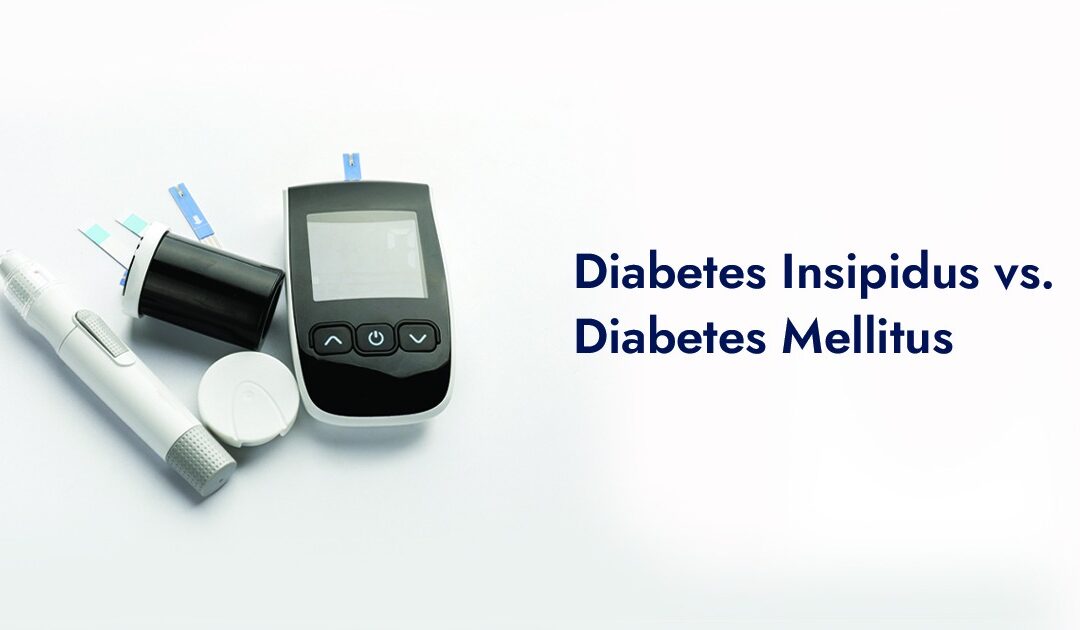Diabetes mellitus and diabetes insipidus have the same first word in their names and share several symptoms. But that’s where the similarities stop. These two diseases are not linked. They produce distinct difficulties and require quite different solutions.
Diabetes mellitus is better known as diabetes. It occurs when your pancreas does not generate enough insulin to regulate the quantity of glucose, or sugar, in your bloodstream.
Diabetes insipidus is an uncommon illness unrelated to the pancreas or blood sugar. Instead, it occurs when your kidneys generate a large amount of urine. Normally, they filter your bloodstream to produce approximately a quart or two every day. When you have diabetes insipidus, it’s closer to 3 to 20 quarts, with the majority being water.
Some symptoms of Diabetes mellitus and Diabetes Insipidus include:
Symptoms of diabetes insipidus in adults include:
– Being extremely thirsty, with a preference for cold water.
– Producing big quantities of pale urine.
– Getting up several times during the night to urinate and drink water.
A baby or young child with diabetes insipidus may show the following symptoms:
- Large amounts of pale pee produce heavy, moist diapers.
- Bed-wetting.
- Being extremely thirsty, with a propensity for consuming water and cold beverages.
- Weight loss.
- Poor growth.
- Vomiting.
- Irritability.
- Fever.
- Constipation.
- Headache.
- Problems sleeping.
- Vision issues.
Some symptoms of type 1 and type 2 diabetes include:
- Feeling thirstier than usual.
- Urinating frequently.
- Losing weight without trying.
- The presence of ketones in the urine. When there is insufficient insulin, the breakdown of muscle and fat produces ketones.
- Feeling exhausted and weak.
- Feeling irritable or experiencing other mood swings.
- I have blurry eyesight.
- I have sores that are sluggish to heal.
- Developing a variety of infections, including gum, skin, and vaginal infections.
Diabetes mellitus and diabetes insipidus have different causes.
Dehydration might cause you to feel exceedingly weary if you have diabetes insipidus. It could also be because you are low on electrolytes, which are flushed out with all of your pee.If you have diabetes, you may feel extremely exhausted when your blood sugar levels are either low or too high.
Diabetes insipidus causes you to feel extremely thirsty because your body loses so many fluids. Diabetes mellitus causes thirst as a result of an excess of glucose in the blood. If you have diabetes insipidus, prolonged dehydration might cause blurred vision.
While both disorders share the name “diabetes” and certain symptoms, such as thirst and exhaustion, they are not the same. Diabetes mellitus is concerned with the regulation of blood sugar, whereas diabetes insipidus is associated with excessive urine production. Understanding the different causes of these diseases is critical for accurate diagnosis and therapy.

